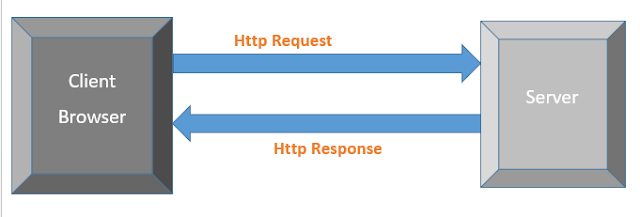HTTP is also known as HyperText Transfer Protocol. HTTP Protocol specifies the requests that a client sends to a server and responses that the server can send the reply. Each request that is sent, has an URL. This URL is a string that identifies a web component or a static object such as an HTML page or image files. HTTP is the mode by which the web pages are communicated across the internet. It is a globally accepted method.
Most of the web clients for communicating with a J2EE server use HTTP Protocol.
J2EE is responsible to convert the HTTP request into an HTTP request object and delivers it to the web component. The web component fills in an HTTP response object, which the server converts it to an HTTP response and sends to the client.
You may also like:
J2EE is responsible to convert the HTTP request into an HTTP request object and delivers it to the web component. The web component fills in an HTTP response object, which the server converts it to an HTTP response and sends to the client.
How HTTP Works?
To understand how HTTP works, consider the following example. Suppose a user browsing the web wishes to visit the site www.javastudypoint.com. The user types this into the location box in the web browser and clicks on go. The browser then makes a connection with the server by finding its IP address from the DNS server. The browser then sends a request to the server to fetch the file. The server responds with information about the page and the content of the HTML page itself.Features of HTTP:
HTTP has three important features.1. HTTP is Connectionless:
After a request is made, the client disconnects from the server and wait for a response. To process the request the server re-establish the connection with the client.
2. HTTP is media-independent:
This means any type of data (text, image, audio, video, etc.) can be sent by HTTP.3. HTTP is Stateless:
HTTP is a stateless protocol that means each time user requests to the server, it treats a new request. It doesn't recognize the requests that are coming from the same user.You may also like:
- Introduction to Servlet
- Servlet Life Cycle
- Session Tracking and its techniques
- JSP Life Cycle
- MVC Architecture in JSP with Example
What is HTTP - HyperText Transfer Protocol?
 Reviewed by Prashant Srivastava
on
December 22, 2018
Rating:
Reviewed by Prashant Srivastava
on
December 22, 2018
Rating:
 Reviewed by Prashant Srivastava
on
December 22, 2018
Rating:
Reviewed by Prashant Srivastava
on
December 22, 2018
Rating:







No comments: